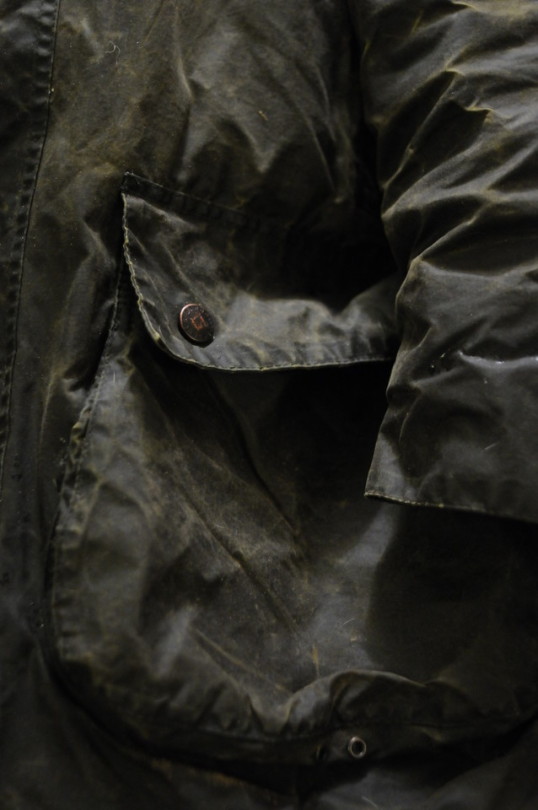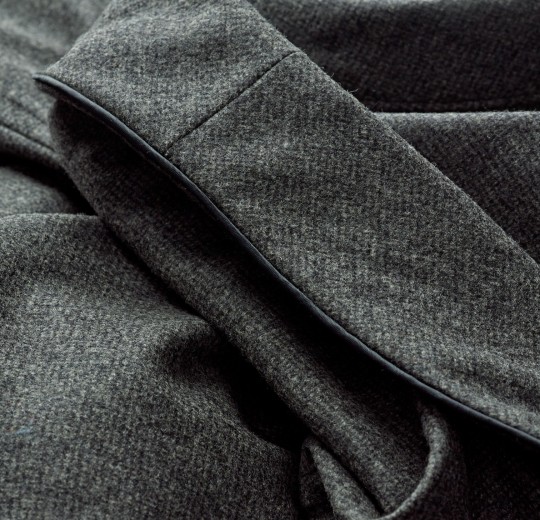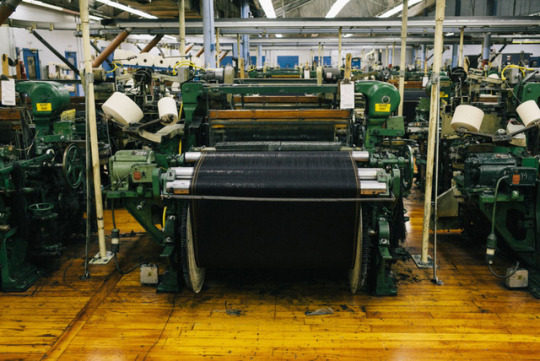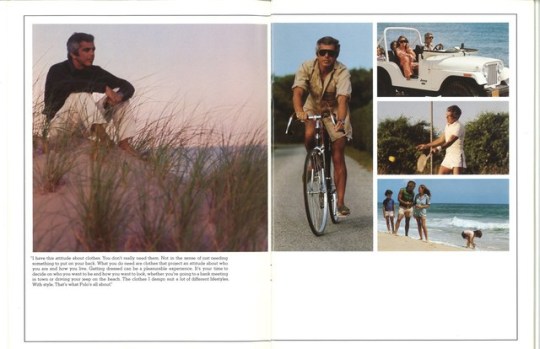Text

Kith, Saturdays, and Omega NYC for a boys night out.
1 note
·
View note
Text

Farrah Fawcett / playing in a celebrity tennis benefit event at the Playboy Mansion in Holmby Hills, Los Angeles, 1976.
602 notes
·
View notes
Text
How to Develop Good Taste, Pt. 2

Style is still something of an art and has not, in Bruce Boyer’s words, “descended to one of the sciences.” The process of developing taste is akin to developing a worldview or personal philosophy—it’s a highly subjective process not easily given to hard rules. But over the years, I’ve noticed that people who’ve been able to develop tasteful wardrobes in a short period of time often rely on the gentle guidance of tasteful merchants, tailors, and friends. So for the remainder of this series on how to develop good taste (part one was published a few weeks ago), I’m surveying stylish people on how they think others can develop a similarly keen sense of aesthetics. Consider these entries like gentle advice from a friend who has the kind of high taste that almost seems unreachable.
When I first thought about who to include in this post, I immediately thought of Mark Cho. Mark is the co-founder of The Armoury and someone I occasionally turn to for wardrobe recommendations. But it was his interview with WatchBox Studios a few years ago that made me want to get his views on the broader subject of taste. In the interview, Mark discusses his watch collecting journey, which started many years ago with an affordable Omega Chronostop he purchased at a second-hand watch store in Hong Kong. He was drawn to the watch for two reasons: he liked the shape of the case and had never seen a gray watch before. That purchase sparked in him a horological passion, and he was soon obsessed with collecting the milestones and classics in watch-making history. But as he’s chopped and changed his collection over the years, he’s found that almost none of those iconic pieces have remained. Instead, his watch collection is just a reflection of his taste, which is threaded together by nothing more than his emotional connection to objects. Having seen and handled thousands of watches since that initial Omega purchase, Mark has also developed what art dealers call The Eye—“that irrevocable power to discern art from trash, real from fake, inspired from derivative.“
There’s no better representation of what it means to have taste than Mark’s tantalum and steel Royal Oak. Originally made to celebrate Nick Faldo’s 1990 Masters and British Open back-to-back championships, Mark purchased it in 2013 because he wanted a baby version of the jumbo-sized Royal Oak 5402. But the only way to achieve that smaller, thinner profile was to get a quartz movement, which the Faldo version houses. High-horology purists would probably frown on the idea of spending thousands of dollars on a quartz movement, but Mark didn’t purchase his Royal Oak as a flex or an “anti-flex"—he simply wanted a smaller version of that design. "The Royal Oak used to be the watch no one wanted, and the quartz even less so,” Mark told me. “In the US, many people considered that watch too small, almost like it’s a ladies’ watch.” True style means dressing like you know yourself, and having the confidence to wear things others might dismiss as uncool. At the same time, it requires cultural awareness and sensitivity to the social meaning of your aesthetic choices. I love that Mark’s Royal Oak captures all of those things, so we’ll start today’s post with his views on how to develop good taste.
Read More
35 notes
·
View notes
Text
Our favourite scarf knot - the pretzel!
A sneaky twist at the looped end of the scarf gives this knot more volume.
Works best with longer scarves - this one here is 82" or 208cm long.
2K notes
·
View notes
Photo

Princess Diana in a puffer that wouldn’t look out of place on Balenciaga’s runway
838 notes
·
View notes
Photo

Boss. (at Dallas, Texas)
1 note
·
View note
Photo

How to Clean Every Fall & Winter Fabric
At the heart of it, style this time of year comes down to fabrics. We love fall/ winter clothes for their hefty tweeds, waxed cottons, and soft flannel shirtings, but cleaning this time of year can be confusing. Can that parka be thrown into the wash? Does corduroy need to be dry cleaned? What are you supposed to do with that Barbour?
We reached out to the best cleaning expert we know of, Stu Bloom, the founder and President of Rave FabriCARE in Scottsdale, Arizona. Rave is unique in that they have their own in-house equipment. Whereas most cleaners send their work out to some mass cleaning plant, where jobs are treated indiscriminately, Rave sorts things according a garment’s design, fabric composition, and even stains. If anyone knows how to care for specific fabrics, it’s them.
Some important caveats before we proceed:
Know What Needs to be Dry Cleaned: If you have a water-based stain, such as those from sweat or coffee, you may be able to get those out at home in the wash. Oil-based stains, such as those from salad dressing or pizza, however, need to be taken to a professional dry cleaner. If you wash those at home, you’ll likely set in the damage.
Consult Your Care Tags: This should be obvious. Even if something is made from cotton, there may be some internal construction that requires it to be dry cleaned. Always consult your garment’s care label.
This is a List of Best Practices: Fall and winter clothes are often a bit rustic, meaning they draw from country traditions. And there’s something to be said about not babying a barn jacket. At the same time, we wanted to get a list of best practices. If you’ve just splurged on an expensive pair of well-tailored corduroy trousers, maybe you don’t want them looking like they’ve gone through the brush. The following is a list of cleaning practices for keeping clothes looking as new as possible.

Wool (e.g. Flannel and Tweed): It should be obvious that tailored jackets – such as suit jackets, sport coats, and dress outerwear – ought to be dry cleaned. They often have complicated internal constructions, such as canvassing and shoulder padding, which can get wrecked in the wash. However, what to do about wool trousers and simpler outerwear?
Stu says wool trousers can be gently washed at home by hand, but the process is arduous. “Wool can shrink, which means you’ll want to take several measurements before washing, such as the waist, inseam, and outseam. After a gentle hand wash, you’ll want to hand block it back to those measurements and let it dry on its own.” Frankly, the process sounds like a pain, so we recommend just sending these out to dry cleaners. The same goes for simple wool outerwear, such as pea coats. “If there’s anything on this list that ought to be dry cleaned, it should be wool clothes,” says Stu.
For how to clean wool sweaters, we have a guide.
Waxed Cotton: Waxed cotton can be tricky, but the good news is that they don’t need to be cleaned often. For simple surface dirt, gently wipe the jacket with a wet sponge (don’t scrub or scour, as you can take off the wax coating). For heavier smells or water-based stains, you can soak them in the tub with some gentle detergent, then leave them to hang dry. For oil-based stains or an all out cleaning jobs, take them to a professional dry cleaner.
The problem with dry cleaning a waxed jacket, Stu notes, is that you’ll end up stripping off the wax. “Dry cleaning is an emulsifier of oils and that wax coating is oil,” Stu says. Which means, if you’re already taking off the wax, you may as well ask for both a wet and dry cleaning – that way, you’ll have a completely pristine jacket. Afterwards, you’ll need to rewax the jacket. You can do this at home using materials Barbour sells, but the process can be arduous and messy. We suggest sending the job out to a specialist, such as New England Reproofers, or using a cleaner that has in-house capabilities, such as Rave FabriCARE.

Corduroy, Moleskin, and Chamois: Napped fabrics have small fibers standing up off the surface, which is what gives these materials their unique texture. Stu notes that, if not properly cared for, these fibers can get marred or distorted. The best way to care for corduroy, moleskin, or chamois is to hand wash them using lukewarm water and gentle detergent. Afterwards, leave the item to hang dry. Once it’s almost completely dry, throw it into the dryer to fluff up the nap (low heat or air dry only). Internal components, such as the waistband and pocket bags, can be ironed, but the rest should be steamed. “You never want to press a hot iron plate onto a napped fabric,” he says. “Otherwise, you’ll crush the nap.”
Cotton Canvas: Proper care for cotton canvas depends on how the garment was made. Clothes are colored by either dyeing the yarn or the garment itself. The first results in a more robust color, while the second has the color sitting just on the surface. Given the weight and texture of cotton canvas, if the garment is put through a washing machine, the color could rub off as the fabric beats against the agitator and drum.
Stu recommends hand washing cotton canvas, then hand drying afterwards. If that sounds like a pain, however, a front loading washing machine will always be better than a top loader. “They’re much gentler,” he says. “Front loaders lift up the garment and then drop them in the cycle, rather than beating them against the drum. If you can, you’ll also want to avoid heavy spin cycles and instead just letting the garment hang dry as much as possible.”
Cotton and Nylon Blends: Items such as mountain parkas and windbreakers are often constructed from of a 60/ 40 blend of cotton and nylon. The material is robust, which means care here is pretty easy – just throw the item into the wash. Always be sure to hang dry afterwards, however. Stu notes that high heat can melt those nylon fibers.

Down: The warmest of material for winter needs special care. Down is made from the fine feathers sitting under the tougher exterior feathers on a bird. They’re the insulating layer, essentially. And on that down are small filaments that stick up, allowing them to interlock with each other. That’s what allows down to trap heat.
Those filaments are only able to stick up because of small oil particles, however, which means you never want to dry clean a down jacket (no matter what the care tag says). “Remember, dry cleaning is an emulsifier of oils,” says Stu. “The moment you strip those oils off the filaments, they’ll collapse. This is something you’ll want to wet clean.” For those looking to do this at home, that means soaking the item in the tub and hand washing it with some gentle detergent. Afterwards, you can throw the item into the dryer on the lowest heat setting.
Note, this is just for real down. Synthetic down can be either hand washed or dry cleaned. If you’re not sure which you own, just hand wash the item to be safe.
Wool and Cotton Blends: A particularly common combination for dress shirts and flannels, these blends can be safely thrown into the wash and hand ironed afterwards.
Red Plaid Shirts: Ever pull your laundry out from the wash and notice your whites have turned slightly pink? It’s the stuff of nightmares. If you’re worried about your red plaid shirts bleeding, compress a damp towel into your shirt. “Cheap shirts are sometimes made with cheap dyes,” says Stu. “You can test this before you wash by compressing a damp cotton towel into the inside of the shirt. If you see the color rub off, just wash it separately.”
You should also be following basic laundry practices. Light colored garments should be washed with other light colored garments, darks with darks. “There’s also something I call ‘mixed,’” says Stu. “That’s something like a burgundy and white striped shirt, or a black garment with a white design. If you’re not sure if something is light or dark, throw it in ‘mixed.’” What are red plaid shirts? “Those are your darks.”
There it is, how to take care of any fall or winter fabric you can possibly own. Again, these are the best practices for keeping something looking as new as possible. You may be safe going into the laundry room with some of these fabrics, but the point here is to use good common sense and some information about what problems may arise.
Big thanks to Stu for taking the time to talk with us!
102 notes
·
View notes
Photo

Last Selvedge Denim Mill in the US to Close
Some surprising news from our friends at Heddels. Cone Mills’ parent company, International Textile Group, announced today that they’ll be closing the North Carolina mill. This comes just a year after a private equity firm acquired the mill, rescuing it from financial troubles. An excerpt from ITG’s press release:
“For more than 125 years Cone Denim has defined American denim and authenticity with the White Oak mill representing the essence of Cone’s heritage,” said Kenneth T. Kunberger, President & CEO of Cone Denim and International Textile Group. “We truly regret having to take this action to close the mill, and we deeply appreciate the loyalty and dedication of all current and former employees of the White Oak mill. Their talent, effort, innovation, dedication, and customer focus all combined to create a White Oak brand, heritage, and legacy that will forever be the heart of the Cone Denim business.”
This marks the end of the last major selvedge denim mill in the United States, just over a hundred years after its opening. Many of our favorite brands, including everyone from Levi’s to Gustin, have relied on Cone Mills for their fabric. You can read the Heddels story here.
84 notes
·
View notes








